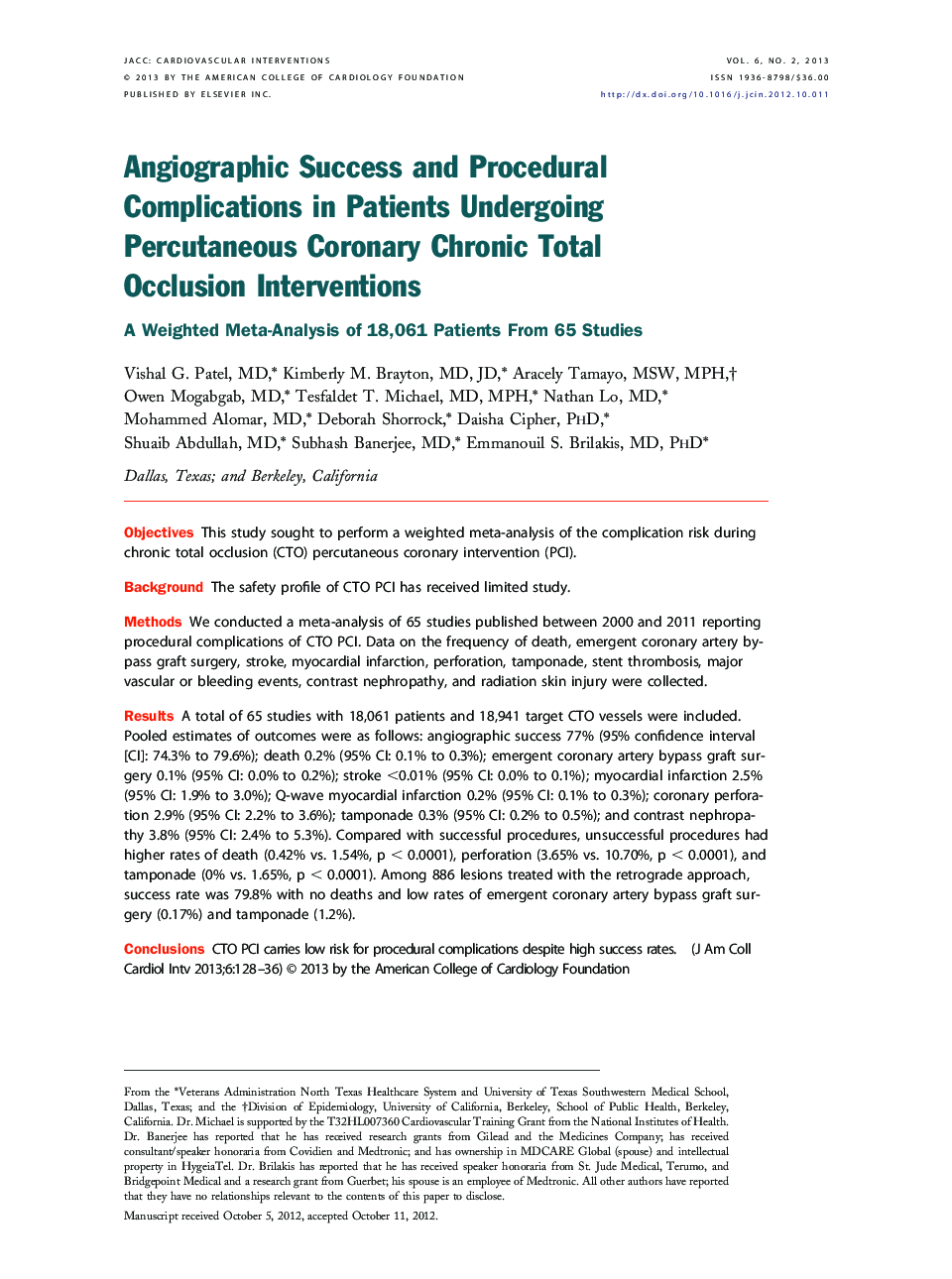| Article ID | Journal | Published Year | Pages | File Type |
|---|---|---|---|---|
| 2940508 | JACC: Cardiovascular Interventions | 2013 | 9 Pages |
ObjectivesThis study sought to perform a weighted meta-analysis of the complication risk during chronic total occlusion (CTO) percutaneous coronary intervention (PCI).BackgroundThe safety profile of CTO PCI has received limited study.MethodsWe conducted a meta-analysis of 65 studies published between 2000 and 2011 reporting procedural complications of CTO PCI. Data on the frequency of death, emergent coronary artery bypass graft surgery, stroke, myocardial infarction, perforation, tamponade, stent thrombosis, major vascular or bleeding events, contrast nephropathy, and radiation skin injury were collected.ResultsA total of 65 studies with 18,061 patients and 18,941 target CTO vessels were included. Pooled estimates of outcomes were as follows: angiographic success 77% (95% confidence interval [CI]: 74.3% to 79.6%); death 0.2% (95% CI: 0.1% to 0.3%); emergent coronary artery bypass graft surgery 0.1% (95% CI: 0.0% to 0.2%); stroke <0.01% (95% CI: 0.0% to 0.1%); myocardial infarction 2.5% (95% CI: 1.9% to 3.0%); Q-wave myocardial infarction 0.2% (95% CI: 0.1% to 0.3%); coronary perforation 2.9% (95% CI: 2.2% to 3.6%); tamponade 0.3% (95% CI: 0.2% to 0.5%); and contrast nephropathy 3.8% (95% CI: 2.4% to 5.3%). Compared with successful procedures, unsuccessful procedures had higher rates of death (0.42% vs. 1.54%, p < 0.0001), perforation (3.65% vs. 10.70%, p < 0.0001), and tamponade (0% vs. 1.65%, p < 0.0001). Among 886 lesions treated with the retrograde approach, success rate was 79.8% with no deaths and low rates of emergent coronary artery bypass graft surgery (0.17%) and tamponade (1.2%).ConclusionsCTO PCI carries low risk for procedural complications despite high success rates.
